14 years one-stop China custom CNC machining parts factory
 930 |
Published by VMT at May 09 2025 | Reading Time:About 8 minutes
930 |
Published by VMT at May 09 2025 | Reading Time:About 8 minutes
Choosing the wrong type of stainless steel can lead to unexpected corrosion, reduced part lifespan, and costly performance issues—especially in demanding industries like marine engineering, food processing, or medical manufacturing. Many businesses assume all stainless steels perform the same, but the reality is far more complex. Each stainless steel grade—316, 304, and 308—has unique properties that directly impact corrosion resistance, weldability, strength, and cost. If you’re selecting materials for CNC machining parts, understanding these differences is crucial. In this article, we’ll break down the key characteristics of 316, 304, and 308 stainless steel, helping you confidently choose the right alloy for your application and avoid unnecessary setbacks.
The main difference between 316, 304, and 308 stainless steel lies in their chemical composition and corrosion resistance. 316 contains molybdenum for superior chloride resistance, 304 is the most versatile and cost-effective, while 308 is optimized for welding 304 components. Choosing the right grade depends on your application’s environment, mechanical needs, and weldability requirements.
Now that you have a quick overview of how 316, 304, and 308 stainless steel differ, it’s time to dive deeper into what truly sets them apart. From their unique compositions to their performance under extreme environments, each stainless steel type brings its own set of advantages and considerations. Whether you’re sourcing materials for marine engineering, food-grade machinery, or high-performance welded parts, understanding these distinctions will help you make more informed decisions. In the following sections, we’ll break down their structures, compare their physical properties, and explore their real-world applications—so you can select the best stainless steel for your project needs.
To explore other helpful materials, you may also want to read our material comparison guides or check out how our CNC machining services adapt to different stainless steel types.
Stainless steel is a corrosion-resistant alloy of iron that contains a minimum of 10.5% chromium. This chromium content forms a passive layer of chromium oxide on the surface, which prevents rust and protects the underlying metal. Stainless steel is widely recognized for its excellent mechanical strength, aesthetic appeal, and durability in a variety of environments. Its resistance to oxidation and staining, combined with low maintenance, makes it ideal for many industrial and domestic applications—from kitchenware to chemical processing equipment. In the field of CNC machining services, stainless steel is highly favored due to its formability, weldability, and the variety of available grades suited to different tasks. Among the most popular types used in CNC machining factories are 316, 304, and 308 stainless steel, each tailored to specific environmental and mechanical needs. Understanding what stainless steel is lays the foundation for selecting the right material for critical parts—especially when performance, longevity, and corrosion resistance matter.
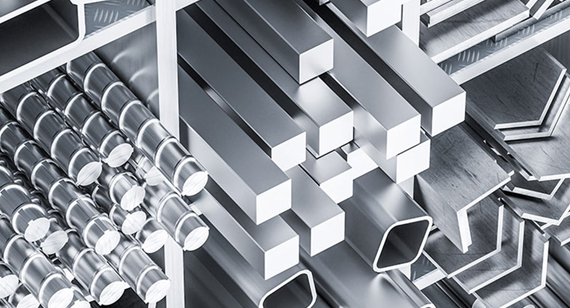
When choosing the right stainless steel for CNC machining applications, understanding its classification is crucial. Stainless steels are generally divided into three main types—ferritic, martensitic, and austenitic—based on their crystalline structure and alloy composition. Each type offers unique properties that determine its suitability for specific industries and use cases.
Ferritic Stainless Steel
Ferritic stainless steels are primarily composed of iron and chromium, typically containing 10.5% to 27% chromium. These steels have a body-centered cubic (BCC) structure, which makes them magnetic. While ferritic stainless steels offer good resistance to stress corrosion and oxidation, they are less ductile and less weldable than other types. They are commonly used in automotive exhaust systems, industrial applications, and appliance components where corrosion resistance is essential but mechanical strength isn't a top priority.
Martensitic Stainless Steel
Martensitic stainless steels are known for their high strength and hardness. They have a body-centered tetragonal (BCT) structure and are typically heat-treated to improve performance. These steels contain higher levels of carbon (up to 1.2%) compared to ferritic grades, which enhances hardness and tensile strength. However, their corrosion resistance is not as high. Martensitic stainless steels are commonly used in cutlery, surgical instruments, and valve components, and they are magnetic and less formable than austenitic steels.
Austenitic Stainless Steel
Austenitic stainless steels are the most widely used group, and they include 304, 316, and 308 stainless steel. These steels are characterized by a face-centered cubic (FCC) structure, which makes them non-magnetic, highly corrosion-resistant, and very weldable. They often contain high levels of chromium (16–26%) and nickel (6–22%), and sometimes molybdenum (as in 316 stainless steel). Austenitic steels are ideal for applications that demand superior corrosion resistance, such as food processing equipment, medical devices, and marine engineering components.
Understanding these categories provides the foundation for evaluating the specific differences between 316, 304, and 308 stainless steel—each of which belongs to the austenitic family. In the next section, we’ll explore what these numbers really mean and why they matter in CNC machining services.
When you see numbers like 316, 304, or 308 associated with stainless steel, they aren’t random—they signify specific alloy formulations defined by the American Iron and Steel Institute (AISI). Each number corresponds to a distinct composition of metals and elements, resulting in different performance characteristics, corrosion resistance levels, and mechanical properties. Understanding what these numbers represent is key to choosing the right material for CNC machining parts.
Why These Numbers Matter
The numbers identify the grade of stainless steel and help manufacturers and engineers choose the right material based on the required properties of the final product. Each grade has a unique blend of chromium, nickel, carbon, and sometimes other elements like molybdenum or manganese, which directly influence performance traits such as:
For instance, 304 stainless steel is a general-purpose grade that provides excellent corrosion resistance and weldability at a relatively low cost. On the other hand, 316 stainless steel includes added molybdenum, which significantly enhances resistance to chloride corrosion, making it ideal for marine or chemical environments. 308 stainless steel is primarily used as a welding filler metal but can also serve in environments requiring both strength and corrosion protection.
Implications for CNC Machining
For CNC machining factories, these distinctions are essential. Selecting the correct stainless steel grade ensures optimal machinability, durability, and cost-efficiency. For example:
By understanding what each number represents, you can make smarter decisions when selecting stainless steel materials for your CNC machining services.
When it comes to stainless steel grades, 316, 304, and 308 are among the most commonly used in a wide range of industries. While they all belong to the austenitic family of stainless steels and share a polished appearance and corrosion resistance, each has its own unique strengths, limitations, and ideal use cases—especially in precision applications like CNC machining parts.
What is 316 Stainless Steel?
316 stainless steel is often regarded as the premium choice when it comes to corrosion resistance. It contains 16–18% chromium, 10–14% nickel, and crucially, 2–3% molybdenum—an addition that significantly improves resistance to chloride corrosion, pitting, and chemical attack.
This makes 316 stainless steel ideal for:
In CNC machining, 316 stainless steel CNC machining parts are highly valued for their strength, cleanliness, and ability to withstand extreme environments. While it is slightly more difficult to machine than 304, modern CNC machining factories are equipped to handle it with precision.
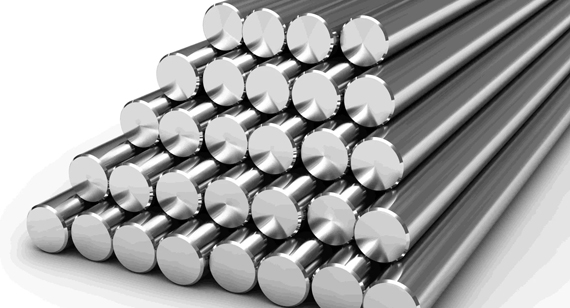
What is 304 Stainless Steel?
304 stainless steel is the most commonly used stainless steel alloy worldwide. It contains 18–20% chromium and 8–10.5% nickel, offering excellent corrosion resistance and good formability, weldability, and machinability at a cost-effective price point.
You’ll find 304 stainless steel in:
For CNC machining services, 304 stainless steel CNC machining parts are an economical and dependable choice, especially for general-purpose applications that don’t require high resistance to chloride or chemical exposure.
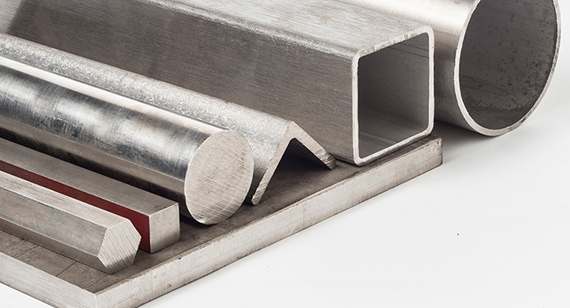
What is 308 Stainless Steel?
308 stainless steel is mainly used as a welding filler material but can also function as a standalone alloy in specific applications. It has a similar composition to 304 but contains slightly more chromium and nickel, improving thermal resistance and oxidation stability.
308 is often used in:
Though it’s less common for full-part fabrication, 308 stainless steel CNC machining parts may be required in high-temperature or welding-intense projects. It's a specialty material used where precise joining and stability are critical.
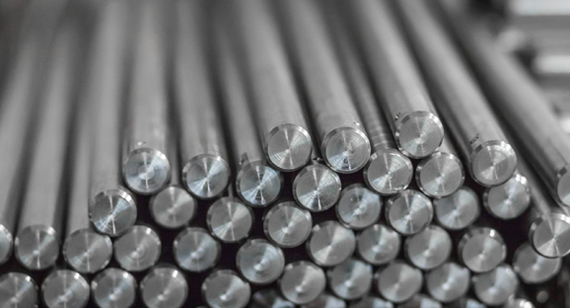
Each of these stainless steels has its place, and choosing the right one starts with understanding how their composition influences their performance. In the next section, we’ll break down the key differences between 316, 304, and 308 stainless steel to help you decide which is best for your application.
Choosing between 316, 304, and 308 stainless steel isn’t just about selecting a number—it’s about aligning your material choice with the performance demands of your application. Each grade is engineered with specific elements that significantly affect corrosion resistance, mechanical properties, temperature tolerance, and suitability for CNC machining services.
The primary difference between 316 and 304 stainless steel lies in their chemical composition. 316 contains molybdenum (2–3%), which drastically improves resistance to chloride-induced corrosion, acidic environments, and saltwater exposure—making it the top choice for marine, chemical, and medical environments. 304 lacks molybdenum, which means it's less resistant in aggressive environments but still offers excellent general corrosion resistance at a more affordable cost.
From a machining perspective, 316 stainless steel CNC machining parts are harder to cut due to the molybdenum content but offer greater durability and longevity in harsh environments. 304 stainless steel CNC machining parts are easier to machine, more budget-friendly, and suitable for indoor or mildly corrosive environments.
304 vs. 308 Stainless Steel
Although 304 and 308 stainless steel share many similarities, their performance diverges under high temperatures and in welding applications. 308 contains higher levels of nickel and chromium, improving its oxidation resistance and making it better suited for high-heat operations and weld stability. It’s often the go-to filler material when welding 304 or 304L stainless steel.
In CNC machining, 308 stainless steel CNC machining parts are not commonly mass-produced due to its niche application, but it's used when heat resistance and weld compatibility are crucial. On the other hand, 304 is a versatile workhorse used in a broader range of industries.
Understanding these differences helps prevent costly material mismatches and ensures optimal performance. Up next, we’ll explore how their composition affects corrosion resistance, strength, and machinability in greater detail.
When selecting between 316, 304, and 308 stainless steel, understanding their individual characteristics is crucial for aligning performance with application requirements. While all three belong to the austenitic stainless steel family, their differences lie in chemical composition, mechanical properties, corrosion resistance, and weldability. These traits ultimately influence their behavior in manufacturing processes such as CNC machining, as well as in final product performance. In this section, we break down each characteristic to help you make the most informed decision for your application.
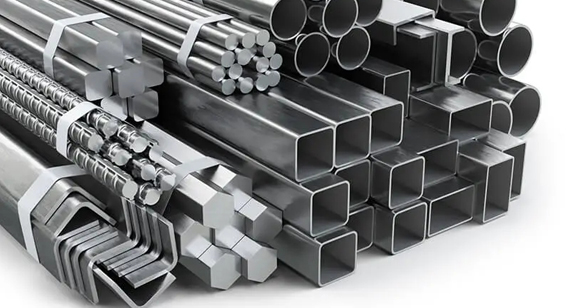
Chemical Composition
Understanding the chemical composition of stainless steel is the foundation for evaluating its performance in various environments. Each grade—316, 304, and 308 stainless steel—has a unique alloy makeup that influences its corrosion resistance, strength, and suitability for specific CNC machining processes.
Main Components
Carbon Content
These subtle but significant differences in composition are critical when selecting the right material for CNC machining services, especially when balancing durability, corrosion resistance, and weldability. If you're looking for premium performance parts from CNC machining factories, matching the alloy’s chemistry to the job’s demands is the first step to success.
Corrosion Resistance
When it comes to stainless steel, corrosion resistance is one of its most valued properties—especially in industries like marine engineering, food processing, and medical equipment manufacturing. Selecting between 316, 304, and 308 stainless steel depends largely on how well each grade can withstand corrosive environments over time. This aspect is vital when producing long-lasting CNC machining parts for demanding conditions.
Corrosion Resistance
Pitting Resistance
Pitting corrosion is a localized form of corrosion that can cause severe material failure. Among these grades:
Crevice Corrosion Resistance
In crevice-prone assemblies, such as tightly fastened parts or welded joints, 316 stainless steel again outperforms due to its molybdenum content. For CNC machined parts that must operate in submerged or enclosed environments, 316 remains the go-to choice. 304 and 308, while suitable for dry or mildly wet environments, may show early signs of corrosion under crevice stress.
Mechanical Properties
Understanding the mechanical properties of stainless steel is crucial for selecting the right material for CNC machining parts, especially when strength, toughness, and performance under load are key. Whether you're building for structural durability, resistance to deformation, or long-term wear, the differences between 316, 304, and 308 stainless steel play a decisive role.
Tensile Strength
Tensile strength indicates the material’s ability to withstand tension without breaking:
These properties ensure that both 304 and 316 stainless steel CNC machining parts can maintain shape and performance under stress, while 316 provides that added strength with better chemical stability.
Yield Strength
Yield strength reflects the point at which permanent deformation begins:
When designing precision CNC components, especially for medical, aerospace, or marine industries, knowing these stress thresholds ensures parts can withstand intended forces without failing prematurely.
Elongation
Elongation measures a material’s ability to stretch before breaking, and it affects flexibility:
This flexibility ensures your parts won't just resist breakage but also tolerate vibrations and minor misalignments in real-world use.
Hardness
Hardness impacts wear resistance and durability:
For CNC machining factories, selecting the stainless steel grade with the appropriate hardness ensures optimal wear life for parts under repeated contact or motion.
Welding Performance
In many industries—from food processing and construction to marine and chemical applications—the ability to weld stainless steel effectively is a major advantage. When choosing between 316, 304, and 308 stainless steel for CNC machining parts, understanding their weldability is essential, particularly if the final application involves fabrication, assembly, or repair.
Weldability
Welding Process Considerations
In summary, all three grades offer strong welding capabilities, but 304 and 316 are ideal for CNC-machined parts that need to be welded during fabrication, while 308 is the standard choice as a compatible filler material. The right welding technique ensures long-term durability and corrosion resistance.
Applicable Environment of 316, 304, and 308 Stainless Steel
Stainless steel is highly regarded for its adaptability, but selecting the right grade is essential when it comes to the working environment. Each stainless steel type—316, 304, and 308—has unique characteristics that influence its performance in general, high-temperature, and welding-intensive environments. Understanding their environmental suitability is crucial for optimal product longevity, safety, and performance.
General Environment
In standard conditions, such as indoor environments, non-corrosive industrial settings, and architectural structures, 304 stainless steel is typically the go-to option. Its excellent corrosion resistance, mechanical strength, and cost-efficiency make it suitable for most applications that do not involve aggressive chemicals or chloride exposure. It’s widely used for kitchen equipment, piping, and home appliances due to its aesthetic finish and workability. However, it may not withstand environments with salt or acid exposure.
On the other hand, 316 stainless steel performs better in mildly corrosive outdoor environments, such as marine-adjacent locations or areas with exposure to industrial pollutants. Its molybdenum content offers an edge over 304 stainless steel in resisting corrosion and pitting from salts and chemicals.
308 stainless steel, while structurally similar to 304, is often used in applications requiring excellent weldability rather than direct environmental exposure. It's typically applied as a filler material or in mild industrial settings.
High Temperature Environment
When operating in high-temperature settings, such as industrial ovens, chemical reactors, or exhaust systems, material stability and oxidation resistance become critical. 308 stainless steel stands out due to its superior high-temperature resistance and thermal stability, making it suitable for welding applications that involve elevated heat. It can maintain strength and corrosion resistance even at elevated temperatures.
316 stainless steel also performs well under high heat but not as robustly as 308 in prolonged exposure. It’s suitable for high-temperature, corrosive environments where heat and chemical resistance are both required—like marine boilers or refinery equipment.
304 stainless steel is less suited for consistently high-temperature applications. While it can handle moderate heat, it becomes less effective when exposed to extreme temperatures for extended periods, as it may lose its corrosion resistance and structural integrity.
Welding Environment
In welding environments, choosing a stainless steel grade that minimizes carbide precipitation and cracking is vital. 308 stainless steel is engineered with welding in mind, often used as a filler material in TIG and MIG welding for 304 and 316 stainless steel. Its formulation resists intergranular corrosion after welding, making it the preferred choice in critical joints and assemblies.
316 stainless steel is weldable with proper technique but may require filler metals (like 316L or 308L) to reduce susceptibility to cracking or heat-affected corrosion. Its enhanced corrosion resistance is beneficial in welded structures exposed to chlorides or chemicals.
304 stainless steel is widely used in welded applications, but like 316, it benefits from using low-carbon versions (e.g., 304L) or compatible filler metals to avoid weld decay. Without proper precautions, welding can reduce its corrosion resistance in the heat-affected zones.
Want to dive deeper into welding considerations for stainless steel? Explore our guide on Stainless Steel Welding Techniques to discover the right approach for your application.
Choosing the right type of stainless steel for a specific application isn’t just about chemical composition or corrosion resistance—it’s about understanding how the material behaves in real-world scenarios. Each grade—316, 304, and 308 stainless steel—excels in different sectors due to their unique properties. From food processing to marine engineering, selecting the right material can significantly influence performance, durability, and cost-effectiveness.
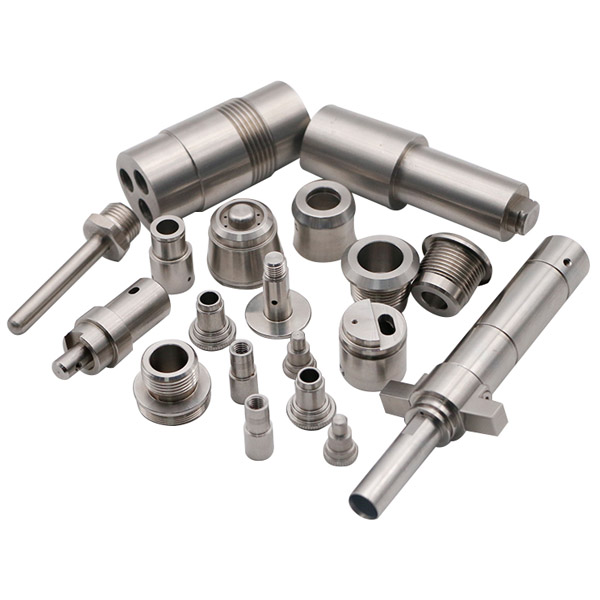
Food Processing
In the food industry, hygiene, ease of cleaning, and resistance to organic acids are paramount. 304 stainless steel is the dominant choice here due to its excellent corrosion resistance in general environments, affordability, and non-reactive properties. It's widely used in sinks, kitchen equipment, brewing tanks, and dairy machinery.
However, in applications where food processing involves salt, acidic ingredients, or harsh sanitizing chemicals, 316 stainless steel is preferred. Its added molybdenum content enhances corrosion resistance, preventing contamination and extending the lifespan of food-grade equipment in more aggressive environments like seafood processing and pickling facilities.
308 stainless steel is typically not used directly in food contact surfaces but often serves as a filler material during welding operations of 304 components, ensuring structural integrity and sanitary welding seams.
Chemical Industry
The chemical processing industry deals with aggressive substances that can corrode lesser metals in a short time. 316 stainless steel is the top choice here due to its superior resistance to acids, alkalis, and chlorides. It is used in tanks, valves, and piping systems that handle corrosive fluids and gases.
304 stainless steel, while still corrosion-resistant, may not be suitable for high-chloride or acidic environments but is commonly found in equipment handling less reactive substances. For example, it can be used in storage tanks and structural components in less demanding areas of a chemical plant.
308 stainless steel, with its weldability and moderate corrosion resistance, is often used in joining or cladding parts made from 304 or 316, providing flexibility in assembly while maintaining chemical compatibility.
Marine Engineering
Few environments are as harsh as the marine setting, where saltwater and humidity constantly test material durability. 316 stainless steel stands out as the ideal option in this industry. Its excellent resistance to pitting and crevice corrosion makes it suitable for boat fittings, underwater fasteners, heat exchangers, and coastal structures.
304 stainless steel, on the other hand, struggles with salt exposure and may corrode if used in direct contact with seawater or humid marine air. It’s occasionally used in indoor marine equipment or for non-critical parts that are not continuously exposed.
308 stainless steel plays a support role here, primarily as a welding filler that maintains integrity in marine-grade 304 or 316 assemblies.
Medical Equipment
When it comes to surgical instruments, implants, and sterilization equipment, biocompatibility and high corrosion resistance are crucial. 316 stainless steel, particularly the low-carbon variant 316L, is favored for its non-reactivity with biological tissues and resistance to sterilization processes involving harsh chemicals or steam.
304 stainless steel is also widely used in hospital furniture, trays, and non-invasive tools. It’s easy to clean, affordable, and corrosion-resistant under most indoor conditions.
308 stainless steel is again mostly reserved for welding purposes, joining components with high hygiene and corrosion resistance requirements.
Architectural Decoration
In architectural applications, stainless steel must deliver both aesthetic appeal and functionality. 304 stainless steel shines here with its clean finish, excellent formability, and resistance to urban atmospheric corrosion. It’s used in railings, facades, doors, and decorative trims.
For more aggressive outdoor environments, especially in coastal cities, 316 stainless steel is the better option to prevent long-term corrosion, ensuring structural and visual longevity.
308 stainless steel does not typically serve as a primary architectural material but plays a crucial behind-the-scenes role in welding and structural assembly.
Interested in precision CNC parts for your next stainless steel project? Explore our services for 316 stainless steel CNC machining parts, 304 stainless steel CNC machining parts, and 308 stainless steel CNC machining parts tailored for your application.
Choosing between 316, 304, and 308 stainless steel isn't simply about comparing strength or price—it’s about understanding how each type performs under specific conditions. Each of these stainless steels has distinct properties that make them suitable for different industrial applications. By evaluating their advantages and disadvantages, you can make a more informed decision for your project—whether you're sourcing materials for food-grade processing equipment, chemical tanks, or high-precision CNC machined parts.
Advantages and Disadvantages of 316 Stainless Steel
Advantages:
316 stainless steel is renowned for its exceptional corrosion resistance, especially against chlorides and marine environments. Its high molybdenum content enhances pitting and crevice corrosion resistance, making it ideal for saltwater, chemical, and pharmaceutical applications. It also maintains strength and toughness at high temperatures and is non-magnetic in the annealed condition. These properties make 316 stainless steel CNC machining parts highly sought after in industries like marine engineering, medical device manufacturing, and food processing.
Disadvantages:
However, 316 stainless steel comes at a premium price due to its alloying elements. Its higher cost can be a limiting factor in budget-sensitive projects. Additionally, it can be slightly more challenging to machine compared to 304, increasing production costs in CNC machining services. Despite being durable, it may not be necessary for applications that don't involve harsh environments—where a lower-grade stainless steel might suffice.
Advantages and Disadvantages of 304 Stainless Steel
Advantages:
304 stainless steel is the most commonly used austenitic stainless steel, offering an excellent balance of affordability, corrosion resistance, and mechanical properties. It is easy to weld, form, and machine, making it an ideal choice for general manufacturing and architectural applications. Its resistance to oxidation and heat up to 870°C adds versatility. 304 stainless steel CNC machining parts are widely used in kitchen equipment, automotive components, and structural supports.
Disadvantages:
While 304 stainless steel performs well in many environments, it is less resistant to chlorides and acidic chemicals than 316. It is more susceptible to pitting corrosion in saltwater or chemical processing environments. For critical applications in corrosive settings, it may not offer the durability needed. Also, while economical, its surface can become dull or discolored over time without proper maintenance.
Advantages and Disadvantages of 308 Stainless Steel
Advantages:
308 stainless steel is engineered primarily as a filler material in welding applications involving 304 stainless steel. Its composition ensures compatibility and strong corrosion resistance, particularly in welded structures. It resists intergranular corrosion well, which helps maintain joint integrity in high-heat environments. When used in CNC machining or welding processes, 308 stainless steel CNC machining parts offer excellent mechanical performance and reliability in thermal cycling conditions.
Disadvantages:
The key disadvantage of 308 stainless steel is its limited application scope compared to 304 and 316. It's not typically used as a base material for structural parts but rather as a welding or overlay alloy. It doesn't match 316’s chloride resistance and doesn’t offer significant cost advantages. In terms of general-purpose applications, it is less versatile than 304, and more specialized than necessary for standard CNC machining projects.
While 316, 304, and 308 stainless steel each have their unique strengths, they also share several important characteristics that make them highly valuable in a wide range of industries. These similarities—ranging from corrosion resistance and mechanical stability to their aesthetic qualities and environmental sustainability—are key reasons why austenitic stainless steels remain some of the most widely used materials in both CNC machining factories and large-scale manufacturing.
Corrosion Resistance
All three—316, 304, and 308 stainless steel—offer solid baseline resistance to oxidation and many forms of corrosion. Their chromium content (usually above 18%) forms a passive oxide layer on the surface, which acts as a natural defense against moisture, chemicals, and air exposure. While 316 performs best in chloride-rich or marine environments, 304 and 308 still provide excellent corrosion protection in general environments like food processing, structural applications, and indoor machinery.
High Temperature Resistance
Each of these stainless steels is capable of withstanding high temperatures. 304 stainless steel can handle intermittent service up to 870°C, while 316 resists scaling at temperatures up to 925°C. 308 stainless steel, typically used in welding applications, retains structural stability under thermal stress. These high-temperature tolerances make them suitable for industrial ovens, exhaust systems, and CNC-machined components subjected to heat.
Mechanical Properties
From a mechanical standpoint, all three materials deliver a strong balance of tensile strength, elongation, and hardness. Though 316 slightly outperforms the others in tensile and yield strength, the difference is marginal in many general applications. Their excellent formability and ductility make them ideal for custom CNC machining services, where complex geometries are required without compromising structural integrity.
Non-Magnetic
316, 304, and 308 stainless steel are all non-magnetic in their annealed state. This makes them suitable for use in environments that require non-magnetic materials, such as medical imaging rooms, aerospace parts, or specialized electronic enclosures. This shared feature also contributes to their popularity in custom CNC machining for sensitive instrumentation.
Easy to Fabricate
All three stainless steels are considered easy to work with in terms of forming, welding, and machining—an important factor for manufacturers and CNC machining factories. Whether you are designing kitchenware, architectural panels, or medical parts, the machinability and formability of 316, 304, and 308 stainless steel help reduce production costs and improve lead times.
Aesthetics
The bright, reflective finish of these stainless steels adds a professional and hygienic appearance, especially when polished. That’s why they're frequently used in visible components like appliances, countertops, and automotive trims. This shared aesthetic quality is a major reason why these materials are commonly used for CNC machining parts that also require visual appeal.
Compliance
Another similarity is that all three grades meet major international standards such as ASTM, ISO, and EN. This ensures they are approved for use in food-grade, pharmaceutical, and construction industries worldwide. For customers looking for stainless steel CNC machining parts with guaranteed compliance, any of these three grades can be a safe choice.
Recyclability
Finally, 316, 304, and 308 stainless steel are 100% recyclable. This makes them environmentally friendly choices for manufacturers seeking sustainable practices. By selecting these materials for CNC machining services, companies contribute to reducing waste and conserving natural resources—supporting long-term environmental goals without sacrificing performance.
Selecting the right type of stainless steel isn’t just a matter of preference—it’s a strategic decision that can affect product performance, cost-efficiency, and long-term reliability. Whether you're sourcing raw material for CNC machining parts or developing custom-engineered components, understanding how 316, 304, and 308 stainless steel differ in composition, corrosion resistance, and machinability is essential. By evaluating their unique properties in relation to your application environment, you can make a confident and cost-effective choice.
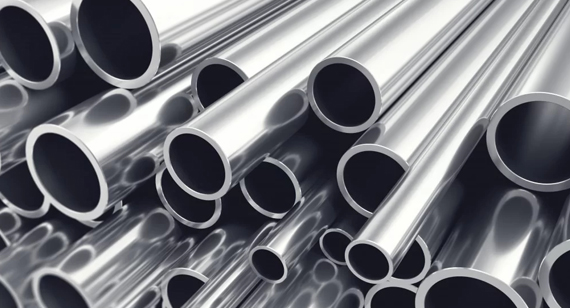
Composition
The chemical composition of stainless steel directly impacts its behavior under various conditions. 316 stainless steel contains molybdenum, giving it superior resistance to chlorides and harsh chemicals. 304 stainless steel, while lacking molybdenum, still offers a well-balanced mix of chromium and nickel for general-purpose strength and corrosion resistance. 308 stainless steel is alloyed similarly to 304 but contains slightly higher chromium and nickel content to enhance weldability and strength under high-heat conditions. When CNC machining factories are selecting materials, the choice often starts with evaluating these compositional factors.
Properties
Each grade exhibits specific mechanical properties. 316 stainless steel provides higher tensile and yield strength, making it suitable for parts that must endure mechanical stress or extreme conditions. 304 stainless steel balances strength with formability, making it ideal for intricate CNC machining parts. 308 stainless steel excels in applications that require frequent welding, particularly as filler metal. Understanding these properties ensures material performance aligns with product demands.
Corrosion Resistance
If your components will operate in aggressive environments—such as marine, chemical processing, or saline applications—316 stainless steel is the top choice due to its molybdenum-enhanced corrosion resistance. 304 stainless steel is suitable for less aggressive environments such as kitchens or medical equipment. 308 offers solid general corrosion resistance but is primarily used in welding applications rather than as a standalone structural material.
Machinability
For CNC machining services, the ease of fabrication matters. 304 stainless steel is typically the most machinable of the three, often used in CNC machining parts that require deep cuts and complex geometries. 316 is slightly harder and may require slower feed rates and more robust tooling. 308 stainless steel, while machinable, is usually selected for its compatibility with welding rather than pure machinability.
Weldability
If your project involves frequent welding, 308 stainless steel stands out as the superior choice, especially as a filler metal in stainless welds. 304 stainless steel also welds well and is commonly used in welded structures. 316 stainless steel can be welded too, but may require special techniques or filler material to prevent intergranular corrosion.
Strength
When strength is a priority, 316 stainless steel delivers the highest performance, especially under pressure and load. It’s ideal for marine hardware, industrial machinery, and chemical tanks. 304 stainless steel provides good strength for everyday use. 308 stainless steel, though strong, is typically selected for its welding compatibility rather than its structural attributes.
Chloride Resistance
316 stainless steel is the clear winner when it comes to resisting chloride attack, making it the preferred material for coastal, marine, and chemical-rich environments. If your application doesn’t involve exposure to chlorides, 304 may suffice and offer cost savings. 308, while capable, isn’t recommended for direct exposure to chlorides unless used in a welded joint with other corrosion-resistant steels.
Rare Materials
308 stainless steel is more specialized and less commonly available than 304 or 316. Its use is often limited to industrial welding applications. 316 stainless steel, while more widely available today, can still carry supply risks in volatile markets due to its molybdenum content. 304 is the most commonly stocked stainless steel, making sourcing easier and more economical.
Cost
Cost is a critical factor. 304 stainless steel is the most economical of the three and sufficient for many everyday applications. 316 stainless steel, due to its enhanced corrosion resistance, commands a higher price. 308, being more niche, is often more expensive and justified only when its welding properties are necessary. For budget-sensitive projects without demanding chemical exposure, 304 may be the most cost-effective solution.
Magnetics
All three materials are non-magnetic in their annealed state. However, cold working or welding may introduce slight magnetic properties, especially in 304. If strict non-magnetic performance is essential—such as in aerospace or medical imaging—316 stainless steel is often preferred.
Price
On the price scale, 304 is the most affordable, followed by 308, with 316 being the most expensive due to its alloying elements. When choosing CNC machining parts or bulk stock for manufacturing, your budget will often dictate whether the added performance of 316 is justified over the more economical 304.
Practical Applications
To choose the right stainless steel, always match the material’s characteristics to the environment and functional demands of your application. For instance:
Explore VMT CNC machining services to help you source the ideal material for your next stainless steel component.
Choosing the correct type of stainless steel—whether it's 316, 304, or 308—is more than just a technical decision; it's a foundational choice that affects product integrity, user satisfaction, long-term cost, and brand reputation. The selection of stainless steel directly influences the component’s resistance to corrosion, mechanical durability, manufacturing efficiency, and compliance with industry standards. In CNC machining services, this decision plays an especially crucial role, as the wrong material can lead to machining inefficiencies, premature failure, or regulatory non-compliance.
From a performance perspective, different stainless steels exhibit varied behaviors under stress, exposure to chemicals, or changing temperatures. For example, using 304 stainless steel in a coastal environment where chloride corrosion is prevalent can lead to rapid pitting and material degradation. In contrast, 316 stainless steel would provide superior protection and longevity under the same conditions. Similarly, selecting 308 stainless steel for applications involving repeated welding ensures structural integrity, whereas an unsuitable alternative may crack or distort during fabrication.
Cost implications are also significant. While 304 may seem more economical at first glance, if it fails in a harsh environment and requires frequent replacements, the total lifecycle cost can far exceed that of 316 stainless steel. Smart material selection upfront can reduce maintenance, improve uptime, and avoid costly recalls or failures—especially critical for industries like aerospace, marine, medical devices, and food processing, where failure is not an option.
Furthermore, regulatory compliance matters. Certain industries require the use of specific stainless steel grades to meet hygiene, safety, or corrosion resistance standards. Choosing the wrong grade could result in product rejection or liability issues.
Ultimately, choosing the right stainless steel helps ensure your parts perform reliably, look professional, and meet your project’s exact demands—especially when manufactured through precision CNC machining services. That’s why partnering with an experienced CNC machining factory like VMT, which understands stainless steel at a material and engineering level, is key to your success.
When precision, durability, and performance are non-negotiable, choosing the right CNC machining factory becomes crucial—especially when working with stainless steel materials like 316, 304, and 308. At VMT, we specialize in CNC machining services tailored to a wide range of industries, providing expert solutions for both common and complex part requirements. Our experience in processing 316 stainless steel CNC machining parts, 304 stainless steel CNC machining parts, and 308 stainless steel CNC machining parts ensures every product meets the highest standards of quality and application performance.
Precision-Crafted Stainless Steel Solutions
VMT’s advanced CNC equipment, combined with our rigorous quality control systems, allows us to deliver precise tolerances, consistent finishes, and reliable mechanical performance across all stainless steel grades. Whether you require components for food processing, medical devices, marine hardware, or architectural fixtures, we ensure that every stainless steel part is machined to perfection.
Expert Support in Material Selection
Not sure whether to use 316, 304, or 308 stainless steel for your parts? VMT offers material consulting to help you select the most suitable stainless steel based on your environment, corrosion exposure, strength requirements, and budget. Our team will work closely with you to understand your product goals and recommend the ideal stainless steel grade to match.
Why Partner with VMT?
At VMT, we don’t just machine parts—we deliver stainless steel machining solutions that are built to last. From 304 and 308 to 316 stainless steel, our factory is equipped to take your designs from blueprint to finished product with unmatched professionalism.
Explore our stainless steel CNC machining capabilities or Contact VMT for a custom quote on your next stainless steel project.
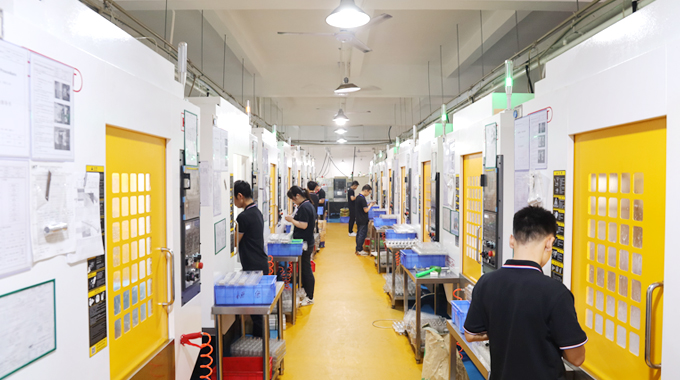
In the world of modern manufacturing and engineering, choosing the right material can mean the difference between long-term success and premature failure. This is especially true when working with stainless steels like 316, 304, and 308, each offering a distinct balance of corrosion resistance, mechanical strength, weldability, and cost-efficiency. By understanding the unique characteristics of each alloy—316’s exceptional resistance in marine and chemical environments, 304’s versatility for everyday applications, and 308’s superior welding compatibility—you can make smarter, more sustainable choices for your parts and projects.
As we've explored, the differences between 316, 304, and 308 stainless steel go far beyond just their chemical composition. They influence product longevity, performance in harsh environments, manufacturing costs, and even regulatory compliance. Whether you're designing a piece of industrial equipment, a medical device, or decorative architectural hardware, material selection should be rooted in a clear understanding of your application's demands.
And when precision and reliability matter most, you need a manufacturing partner who not only understands the material—but knows how to machine it to perfection. That’s where VMT CNC machining services come in. We specialize in 316 stainless steel CNC machining parts, 304 stainless steel CNC machining parts, and 308 stainless steel CNC machining parts, offering you end-to-end support from material consulting to production and delivery.
Don’t leave your material decisions to guesswork. Let VMT be your trusted partner in stainless steel CNC machining—where quality, precision, and expertise come together to bring your ideas to life.
Get in touch with VMT to start your project today or learn more about our stainless steel CNC machining services.
FAQ: Answers to Common Questions About 316, 304, and 308 Stainless Steel
Which is better, 316 stainless steel or 304 stainless steel?
316 stainless steel offers superior corrosion resistance—especially in environments with chlorides or acids—making it ideal for marine, chemical, and medical applications. 304 stainless steel is more cost-effective and sufficient for most general uses. The better option depends on your specific environment and durability needs.
What does 308 in stainless steel mean?
308 stainless steel is primarily used as a welding filler metal for joining 304 stainless steel parts. It contains slightly higher levels of chromium and nickel to improve weldability and corrosion resistance in welded joints.
What is the difference between 304 stainless steel and 308 stainless steel?
304 is a base stainless steel used in construction and manufacturing. 308 is a welding filler metal designed to match 304's properties while enhancing corrosion resistance at the weld zone. They’re often used together in fabrication projects.
Which is better, 310 stainless steel or 316 stainless steel?
310 stainless steel handles higher temperatures better, making it suitable for furnace and heat exchanger applications. 316 is better in corrosive or chemical-rich environments. Choose based on temperature vs. corrosion resistance requirements.
Why is 316 more expensive than 304?
316 contains molybdenum, which significantly boosts corrosion resistance, especially in chlorinated environments. This added element increases both performance and cost.
304 stainless steel or 310 stainless steel?
Choose 304 for general corrosion resistance at a lower cost. Opt for 310 when high-temperature strength is essential, such as in heat-treating or exhaust systems.
Will 310 stainless steel rust?
While highly resistant to heat and oxidation, 310 can still corrode in chloride-rich environments. It's best used where heat resistance is a priority, not where chlorides are prevalent.
Is 301 stainless steel better than 316 stainless steel?
301 is known for excellent formability and high strength when cold-worked. However, it lacks the corrosion resistance of 316, making 316 the better choice for harsh or marine environments.
Why is 316L better than 316?
316L has a lower carbon content, which enhances its weldability and reduces the risk of carbide precipitation. It's the preferred choice for welded structures exposed to harsh chemicals.
Will 304 stainless steel rust?
304 resists rust in most environments, but it can corrode in high-chloride or salty conditions, such as near oceans or in chemical processing areas.
Which is better, 301 stainless steel or 304 stainless steel?
301 offers greater strength after cold working but less corrosion resistance than 304. Choose 304 for balanced durability and rust prevention, and 301 for strength and formability.
Which grade of stainless steel is best?
There’s no one-size-fits-all answer. 316 is best for corrosion, 304 for affordability and general use, and 310 for high-temperature environments. The “best” grade depends on your application.
Will 316 stainless steel rust?
316 is highly corrosion-resistant, especially against saltwater and industrial chemicals. While not immune to rust in extreme conditions, it significantly outperforms most other stainless steels.
Which is better for cooking, 304 or 316?
304 is commonly used in cookware and kitchen appliances due to its affordability and sufficient food safety. 316 is better for cooking in acidic or salty environments but is more expensive.
How to check SS 304 and 316?
Chemical testing (such as XRF or spark analysis) can determine the alloy. You can also look for subtle magnetic differences—304 may be slightly magnetic, while 316 is typically non-magnetic.
Can 304 and 316 stainless steel be used together?
Yes, but be cautious. Galvanic corrosion can occur when they’re exposed to electrolytes (like saltwater). Use proper insulation or coatings to minimize this risk.
What is the best version of stainless steel?
The best version depends on your application. For marine and chemical uses, 316 or 316L is ideal. For general-purpose and cost-effectiveness, 304 is often the top choice.
